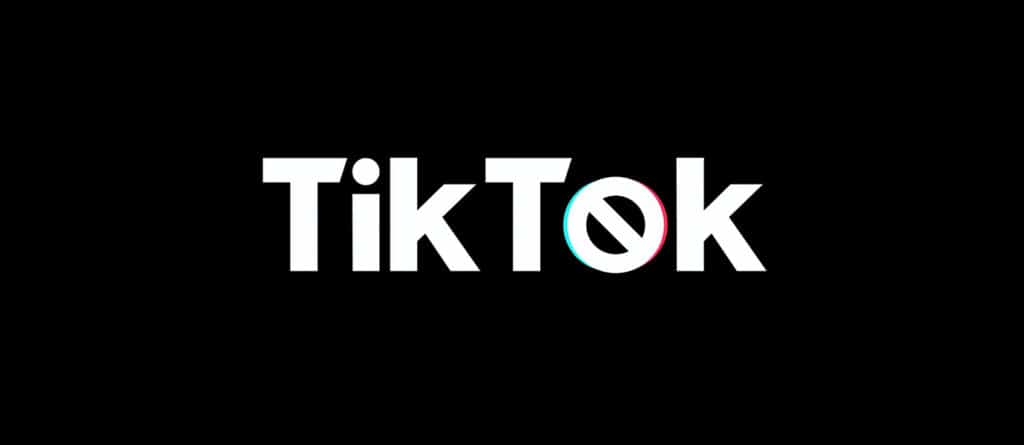TikTok’s rise to prominence has been nothing short of astounding. Although the social media platform was originally released in 2016, it was practically unheard of outside of Asia before 2018, when it started making its way into the Western mainstream.
Now, even amidst political controversy, TikTok seems here to stay, and businesses are taking notice.
However, unlike Facebook, Instagram, and Twitter, TikTok is much more of a niche platform. While pretty much every business should have some kind of a presence on “The Big Three,” TikTok isn’t suitable for every company out there. For many, putting effort into growing a TikTok following would simply be a waste of time.
So, how do you know if your business should be looking the other way or investing some tick-tock into TikTok? Here, we’ll cover the basics of the platform and provide some insights into how to make a decision for your business.
What Makes TikTok Unique? And Why Is TikTok Popular?
TikTok has made a name for itself for three main reasons: its content is bite-sized, loopable, authentic, and addicting, its algorithm makes it possible for new accounts to go viral with their first video, and it’s easy to get involved with trending challenges and hashtags.
With today’s diminishing attention spans and feverish appetites for quickly-consumable content, TikTok has unsurprisingly won over the hearts of the millions of people who want short, 30-second videos that they can endlessly scroll through.
On the creator side, TikTok’s algorithm doesn’t emphasize follower counts, which seduces many users with the prospect of overnight Internet stardom.
Plus, the huge number of challenges and hashtags circulating on the platform means that users can hop on a trend with little effort and spend their afternoon making content for TikTok — and it may even go viral!
From a historical perspective, TikTok is the spiritual successor to Vine and Musical.ly, two now-defunct platforms, and its content represents a merging of the two. Vine focused largely on comedy videos, while Musical.ly encouraged users to make short dance and lip-syncing videos with their favorite songs.
TikTok combines these two ideas into a single platform that serves up both bite-sized comedy and music videos. While other types of content are available on TikTok, these two are the bread and butter of the platform.
To get an idea of the type of content you’ll see on TikTok, take a look at these examples:
- Who else eats the popcorn before the movie even started?
- My Imagination when Mom says “Money doesn’t grow on trees”
- Haha what news
Music and TikTok
As you can probably tell by now, the use of music is one of the defining features of the platform. By picking out the catchiest parts of songs and setting videos to them, it’s easy to get trends going that keep viewers glued to their phones.
In fact, you can even filter videos by audio by tapping on the song name, like so:
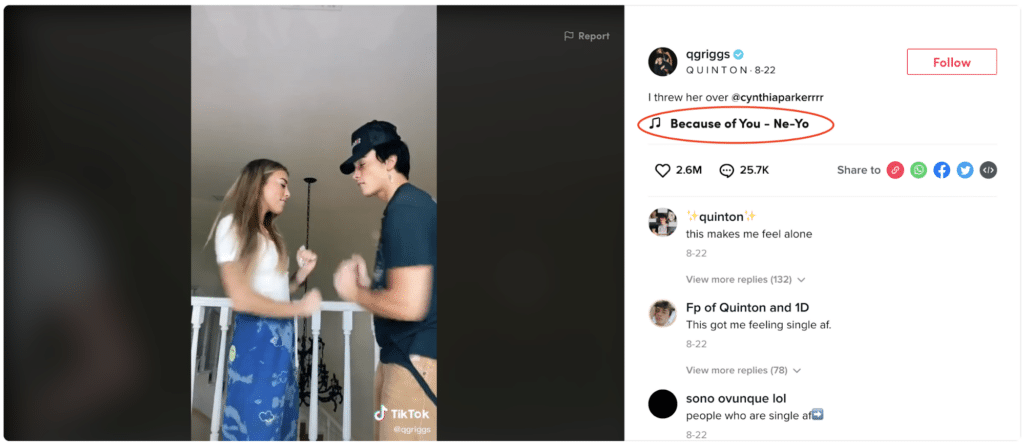
When you do that, you’ll see all the posts that use that audio clip:
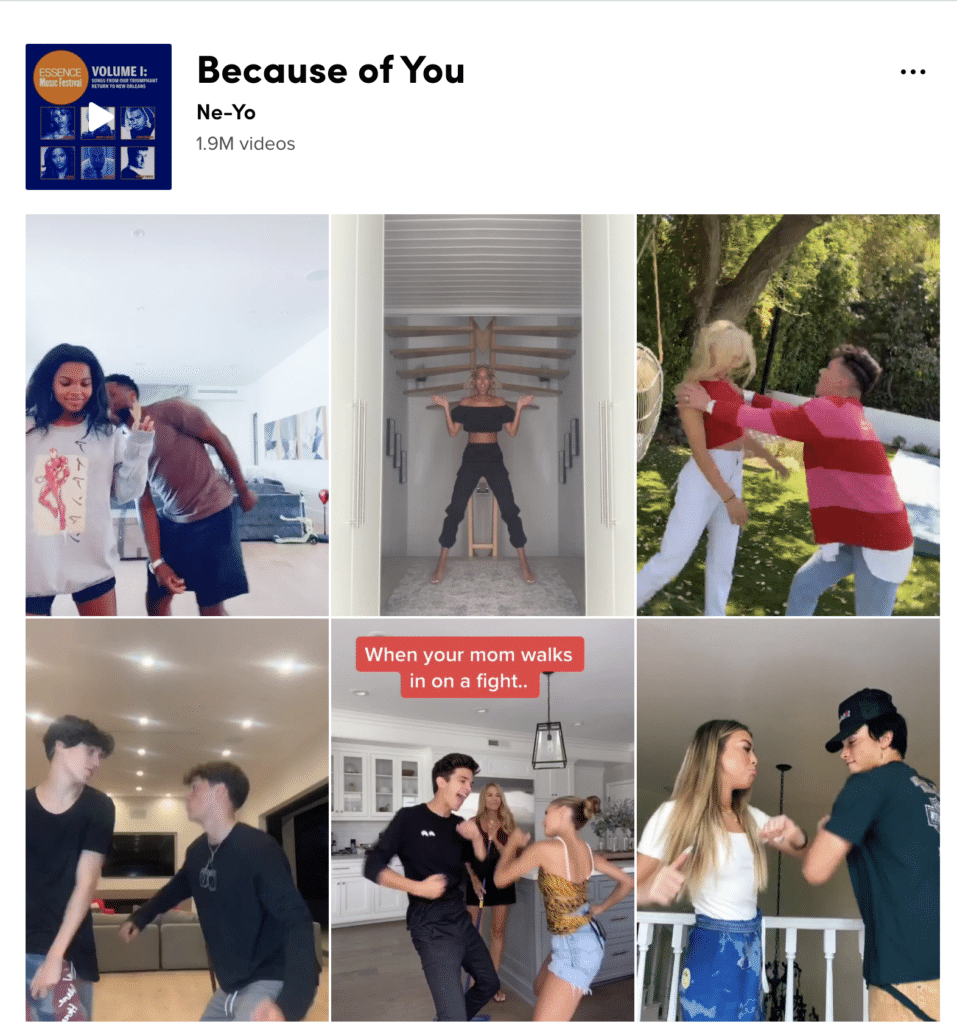
This feature makes TikTok truly addicting. Once you’ve got a song stuck in your head, you can keep flipping through tons of videos to get your fix of the chorus and see some visually appealing content at the same time. It’s essentially putting the catchiest parts of songs on repeat.
TikTok Hashtags and Challenges
Like music, hashtag challenges are one of the most important parts of TikTok. Users post specific dances or actions with a hashtag and then encourage other users to do the same — think of the #icebucketchallenge back in 2013.
To get an idea of what that looks like, check out this compilation of entries in the Old Town Road challenge:
Old Town Road (Tik Tok Compilation)
It’s not hard to tell why TikTok has rocketed to success among the younger generations: it’s fun! Teens and young adults can have a blast dancing to their favorite songs as well as making and completing challenges.
In this way, TikTok becomes more than just a social media platform: it’s an activity in itself. Friends can create videos together when they’re hanging out, and they can share videos from people they know.
TikTok thrives on viral challenges, and TikTok For Business has started profiting off of this by selling a type of ad called branded hashtag challenges, which are featured and promoted challenges.
TikTok Demographics
Compared to other social media platforms, TikTok has a laser-like focus on the 13 to 24 age demographic, which means that, in some ways, all TikTok posts are already “targeted” by nature.
In fact, a whopping 69% of TikTok users are between the ages of 13 and 24 (27% are 13-17 and 42% are 18-24). That means that the content that works on TikTok is very different from the type of content that works on Instagram or Facebook, which have older and more evenly distributed audiences.
Authenticity
The type of videos that are popular on TikTok aren’t necessarily those with the highest production quality. TikTok has won over the hearts of millions because it has maintained a casual, fun, and authentic aesthetic. Anyone can open the app and have fun making a video – it simply feels accessible.
Instagram, on the other hand, has already become the stomping ground of major brands and corporations, and even influencers, who are supposed to be more personal, almost always post very polished content. Although more and more brands are adopting TikTok for marketing, it’s still retained its down-to-earth feel.
Even household names with large production budgets choose to go DIY when it comes to TikTok. For example, take a look at Kevin Hart’s Instagram feed compared to his TikTok feed:

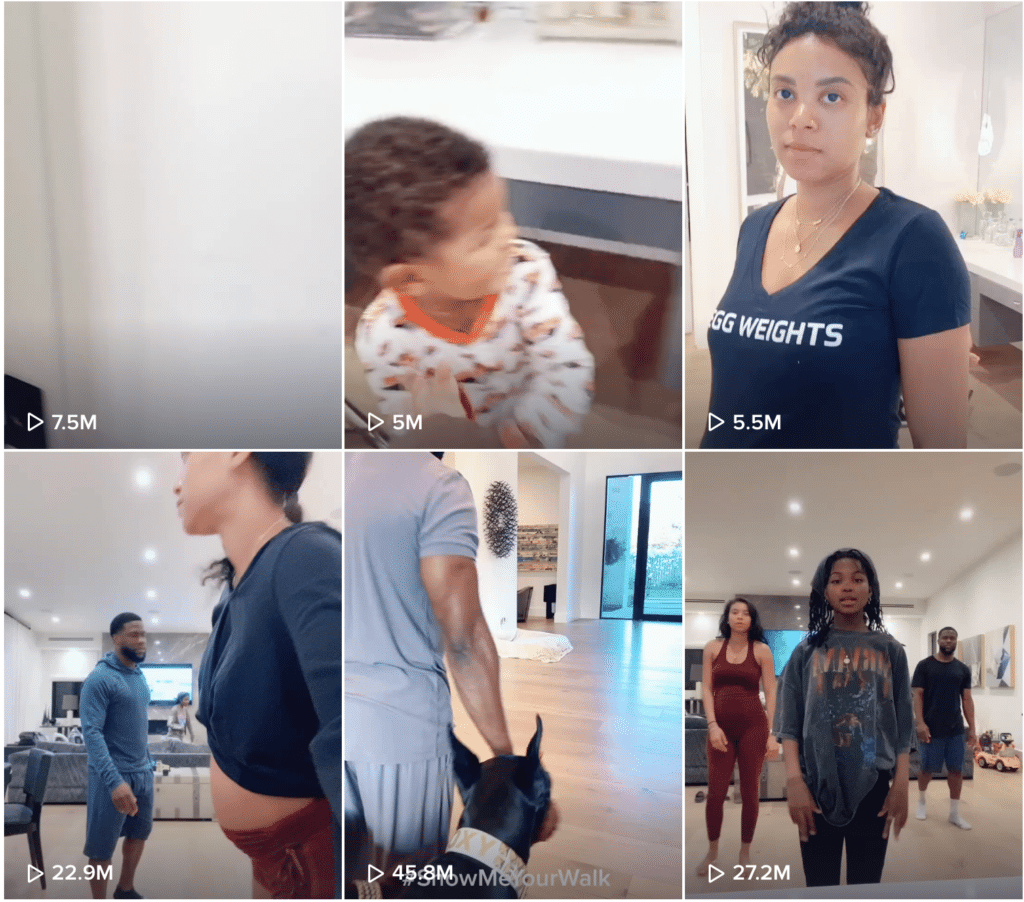
Similarly, look at how the Washington Post uses these two platforms differently:
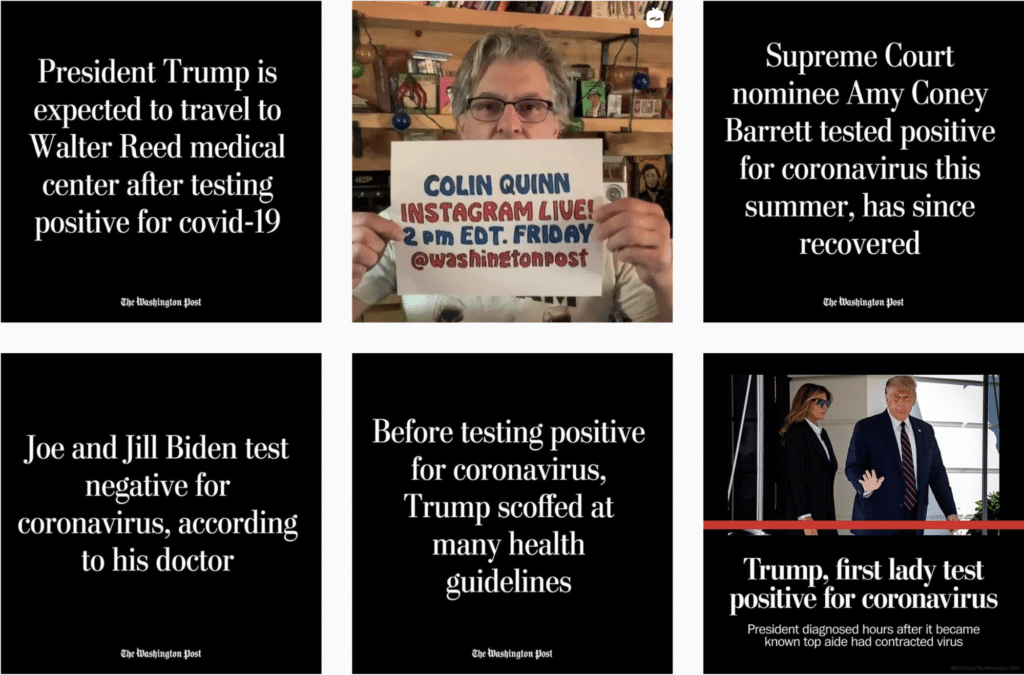

In both examples, the production quality is lower, and the content maintains a casual, fun, and unprofessional vibe.
Should Your Business Be On TikTok?
TikTok is a fairly niche platform that appeals primarily to Gen Z and some younger millennials. While there are people of all generations on TikTok, older ones are in the minority.
As a result, TikTok is useful primarily for businesses that cater to a young crowd: think fashion, video games, music, etc.
However, it doesn’t generally work well for businesses that are in more “adult” or “professional” niches, like law, finance, or manufacturing. For example, if you run a contracting company, you’re not going to find too many people looking to get their driveways repaved on TikTok.
But if you’re trying to appeal to the 13-24 demographic, then the answer to whether you should be on TikTok is almost definitely “yes.” You’re in the sweet spot.
That said, TikTok is such a new platform with so much room for innovation that, given enough creativity, many “adult” businesses can still succeed on the platform. For example, you’d think the Washington Post would be too serious for TikTok, but they’ve managed to create a very successful account.
Similarly, while financial firms might not immediately think TikTok is a goldmine, it’s not hard to imagine a TikTok account focused on providing entertaining financial advice, à la the Washington Post, to teens who are about to get their first credit and debit cards. The key is finding creative ways to reframe topics that the younger generations typically consider dry or boring.
However, not all businesses will see success even with excellent reframing. For example, B2B businesses and corporate lawyers will probably end up wasting their time marketing themselves on TikTok.
If you’re going to venture into TikTok, here’s what you need to keep in mind:
- Watch before you walk: Before you post any content on TikTok, spend a few days or weeks scrolling through to get a feel for what the platform is like. You need to learn how to speak the language of TikTok. Don’t rush this part.
- Keep your content fun: People use TikTok for lighthearted entertainment. Don’t post dry content and expect to go viral or gain a following.
- Use music: Music is integral to much of TikTok, so keep an eye out for the songs you’re hearing the most, and make content based around them.
- Jump on hashtag challenges and create your own: A trending hashtag challenge is a perfect opportunity for you to create content that will appeal to a large audience on TikTok. Alternatively, you can create your own challenge, which is a great way to get user-generated content (UGC).
- Let down your guard and experiment: Posting your Instagram and Facebook content to TikTok likely won’t work. To truly be successful on TikTok, you’re going to need to get out there and try out completely new types of content. If you’re not able to loosen up and get a bit wacky, it’s best to stay off the platform entirely.
The Bottom Line: Should You Be On TikTok?
Businesses that cater to a younger audience (13-24) and are willing to create fun and creative content should give TikTok a shot. If your brand targets an older demographic, you may find TikTok useful as well, but it probably shouldn’t be your priority.
Remember: TikTok is a platform for short, fun, and creative videos that typically revolve around a snippet of music. If you can think of a way to market your business within that medium, then go for it!
But if not, stay off the platform until you can. You don’t want to come across as the old guy who’s trying to be cool and failing miserably. If you do that, you might just end up on r/FellowKids — not a good look.

